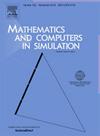Conditional generalized quantiles as systemic risk measures: Properties, estimation, and application
IF 4.4
2区 数学
Q1 COMPUTER SCIENCE, INTERDISCIPLINARY APPLICATIONS
引用次数: 0
Abstract
The conditional -quantile, or simply conditional quantile, is vital for measuring systemic risk, i.e., the risk that the distress experienced by one or more financial markets spreads to the others. One may formulate conditional quantile-based value-at-risk (CoVaR), but it depends only on the probability of loss occurrence. Alternatively, one may define conditional expectile-based value-at-risk (CoEVaR) or -CoVaR, but it is too sensitive and thus unrobust to extreme losses. In this paper, we aim to construct a generalized measure of systemic risk, called -CoVaR, based on conditional -quantiles when the conditioning risks are measured using -VaR, where . We find that the -VaR and -CoVaR are coherent for all linear portfolios of elliptically distributed losses and are asymptotically coherent at high confidence level for independently and identically distributed losses with heavy right-tail. In addition, we determine their estimators and the respective asymptotic properties. In particular, we perform the -CoVaR estimation using multivariate copulas, enabling us to link marginal risk models and capture their complex dependence. Our Monte Carlo simulation study demonstrates that the -VaR and -CoVaR estimators with , respectively, exhibit relatively better (conditional) coverage performance than the VaR and CoVaR as well as EVaR and CoEVaR estimators. Furthermore, our empirical study based on cryptocurrency return data with the best-fitting dependence model having heavy-tailed margins and tail dependence structures validates this result. It also confirms that the -VaR and -CoVaR with are, respectively, not as insensitive as VaR and CoVaR and not as sensitive as EVaR and CoEVaR to an extreme loss. Their less conservativity compared to the respective VaR and CoVaR at high confidence level is practically important for determining required capital reserves.
作为系统风险度量的条件广义分位数:性质、估计和应用
条件l1分位数,或简称为条件分位数,对于衡量系统性风险至关重要,即一个或多个金融市场所经历的困境蔓延到其他金融市场的风险。人们可以制定基于条件分位数的风险价值(CoVaR),但它仅取决于损失发生的概率。或者,可以定义基于条件预期的风险值(CoEVaR)或L2-CoVaR,但它太敏感,因此对极端损失不可靠。在本文中,我们的目标是在使用Lp-VaR测量条件风险时,基于条件lp分位数构建一个广义的系统风险度量,称为Lp-CoVaR,其中p≥1。我们发现,对于所有具有椭圆分布损失的线性组合,Lp-VaR和Lp-CoVaR是相干的;对于具有重右尾的独立分布和同分布损失的线性组合,Lp-VaR和Lp-CoVaR在高置信水平上是渐近相干的。此外,我们还确定了它们的估计量和各自的渐近性质。特别是,我们使用多元copula进行Lp-CoVaR估计,使我们能够连接边际风险模型并捕获它们的复杂依赖关系。我们的蒙特卡罗模拟研究表明,分别具有1<;p<;2的Lp-VaR和Lp-CoVaR估计器比VaR和CoVaR以及EVaR和CoEVaR估计器表现出相对更好的(条件)覆盖性能。此外,我们基于具有重尾边际和尾依赖结构的最佳拟合依赖模型的加密货币回报数据的实证研究验证了这一结果。它还证实了具有1<;p<;2的Lp-VaR和Lp-CoVaR分别不像VaR和CoVaR那样不敏感,也不像EVaR和CoEVaR那样敏感。与各自的VaR和CoVaR相比,它们在高置信度水平下的保守性较低,这对于确定所需的资本准备金具有实际意义。
本文章由计算机程序翻译,如有差异,请以英文原文为准。
求助全文
约1分钟内获得全文
求助全文
来源期刊

Mathematics and Computers in Simulation
数学-计算机:跨学科应用
CiteScore
8.90
自引率
4.30%
发文量
335
审稿时长
54 days
期刊介绍:
The aim of the journal is to provide an international forum for the dissemination of up-to-date information in the fields of the mathematics and computers, in particular (but not exclusively) as they apply to the dynamics of systems, their simulation and scientific computation in general. Published material ranges from short, concise research papers to more general tutorial articles.
Mathematics and Computers in Simulation, published monthly, is the official organ of IMACS, the International Association for Mathematics and Computers in Simulation (Formerly AICA). This Association, founded in 1955 and legally incorporated in 1956 is a member of FIACC (the Five International Associations Coordinating Committee), together with IFIP, IFAV, IFORS and IMEKO.
Topics covered by the journal include mathematical tools in:
•The foundations of systems modelling
•Numerical analysis and the development of algorithms for simulation
They also include considerations about computer hardware for simulation and about special software and compilers.
The journal also publishes articles concerned with specific applications of modelling and simulation in science and engineering, with relevant applied mathematics, the general philosophy of systems simulation, and their impact on disciplinary and interdisciplinary research.
The journal includes a Book Review section -- and a "News on IMACS" section that contains a Calendar of future Conferences/Events and other information about the Association.
 求助内容:
求助内容: 应助结果提醒方式:
应助结果提醒方式:


